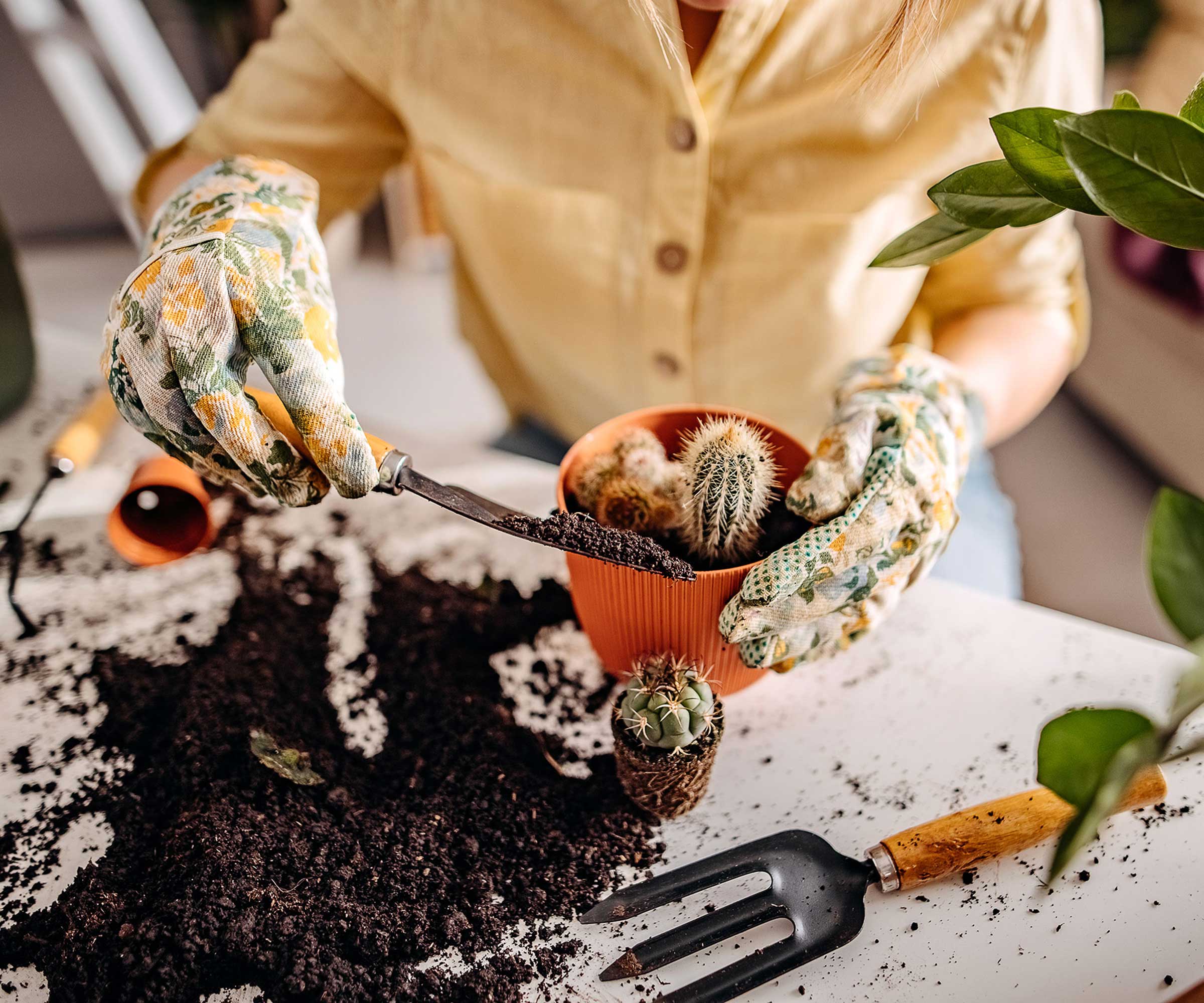What's the best way to repot a cactus? Experts reveal their tried and tested methods
Learn how to repot a cactus to help your plant grow for many more years to come


Knowing how to repot a cactus properly is an important part of caring for these prickly houseplants. Cacti are one of the best indoor plants to grow, and for very good reasons. These desert plants have unique, sculpture-like shapes and require minimal care, provided they get plenty of light.
Cacti are slow-growing and won't need repotting often. However, if the time has come to give your cactus a bigger pot, there are a few important rules to follow to make sure your indoor plant thrives in its new container.

These plants are easy-care and good-looking
How to repot a cactus in 5 simple steps
Houseplant experts identify the key steps for repotting a cactus successfully, so you can keep these prickly specimens in the best of health.
1. Get your supplies
Before you begin repotting your cactus, gather all the tools and supplies you will need. Sonja Detrinidad, the owner of Partly Sunny Projects – an online plant shop specializing in cacti, succulents, and air plants – recommends the following supplies:
- A new pot
- Cactus potting mix (available at Amazon)
- A top dressing (optional)
- A thick pair of gardening gloves to protect your hands
- Kitchen tongs or tweezers for smaller cacti

Tweezers or tongs are the easiest way to move your cactus to a new pot
2. Prepare the potting mix
'Cacti need a well-draining potting mix that contains a combination of soil and coarse materials such as perlite or sand,' says Vladan Nikolic, a houseplant expert at Mr. Houseplant. 'You can purchase a pre-made cactus potting mix or make your own by mixing equal parts potting soil, perlite, and coarse sand.'
You can even try making your own cactus potting mix.
3. Remove the cactus from its old pot
Sonja highly recommends taking extra steps to protect your hands when repotting a cactus: 'Unless you are the proud owner of Kevlar gloves [try Amazon] that resist puncture, you will need something to serve as a barrier between you and the pokies that adorn your plant. I like kitchen tongs personally.
Design expertise in your inbox – from inspiring decorating ideas and beautiful celebrity homes to practical gardening advice and shopping round-ups.
'You can use an old towel to wrap around the plant, and I have even used an empty plastic nursery pot to serve as a container to drop the cactus into and I could then position the cactus by using that pot to maneuver the plant into place.'
Vladan recommends using 'a piece of cardboard to handle the cactus. Wrap it around the base of the cactus and gently lift it out of the pot. If you’re having trouble taking it out, use a butter knife to separate the soil from the edges of the pot.'
Once you've removed the cactus, gently break apart the root ball if the soil is compacted. 'You may even want to remove all the soil possible to get consistent soil medium completely around your plant,' says Sonja.

Gloves are essential to protect your hands when handling your cactus
4. Repot your cactus
Place a layer of your cactus mix at the bottom of the new pot. Position your plant in the new home, holding it with your grabber of choice and filling the pot up to 1in from the top of the pot. Gently and carefully tamp down the soil around the plant.
When decorating with plants, a top dressing such as small pebbles or colored stones can give the overall aesthetic a boost. 'While top dressing is not necessary, it does finish off the look – think of it like jewelry for your plant,' says Sonja.
This decorative gravel from Amazon is ideal for adding to the top of your cactus pot. It's made up of lots of small stones and is available in a wide range of colors including white, black, gray and mixed.

A good cactus potting mix will aid drainage in the new pot
5. Water, but not right away
Most houseplants should be watered right after you've finished repotting, but the process is different for these easy indoor plants.
Scott Ingram, the houseplant expert at Two Gloves, recommends waiting 'around a week until the soil has settled and the cactus has adjusted to its new pot.'
How do you know when it's time to repot your cactus?
Sonja Detrinidad advises that 'typically you’ll want your plant to be in proportion to the size of the pot.' If the cactus is falling over, it's definitely too big for its current pot. The same rules apply when repotting succulents, too.
You may also want to repot if you are having issues with drainage. These will start happening if the cactus is so rootbound that water is no longer freely draining from its pot.
Finally, Sonja points out that 'newly purchased cacti should also be repotted, since the soil used to grow them in nurseries may not be the best soil for the home hobbyist.'
How often should you repot a cactus?
Scott Ingram advises that cacti should be repotted 'every 3-4 years, or whenever the roots reach the side of the pot and start showing through the drainage holes. This prevents the cactus from becoming pot-bound.
'At this point, you should move the cactus to a larger pot. This should be done during the active growing period (early to mid-spring) to ensure the plant has the energy to recover.'
Do you need to use special soil when repotting a cactus?
Yes, it is important to use a well-draining potting mix specifically formulated for cacti. Vladan Nikolic explains that this helps to ensure that the soil drains well and does not retain too much moisture.

Anna is a professional writer and academic. She taught English Literature for several years before joining Future where she wrote for Real Homes, Homes & Gardens and Livingetc for four years. She is a regular contributor for Parade Home, BiggerPockets, and many other publications. In her spare time, Anna enjoys hiking and gardening.